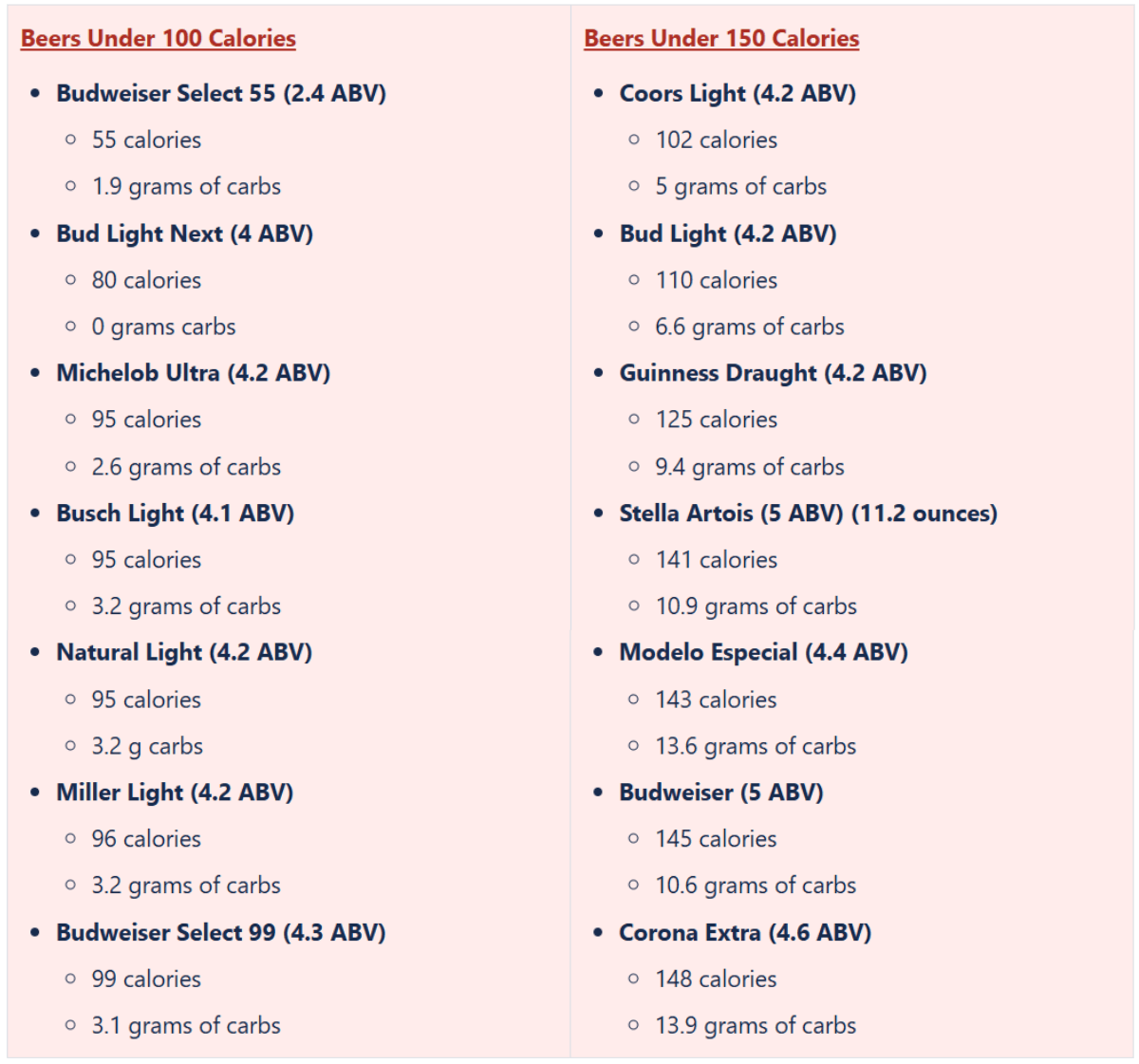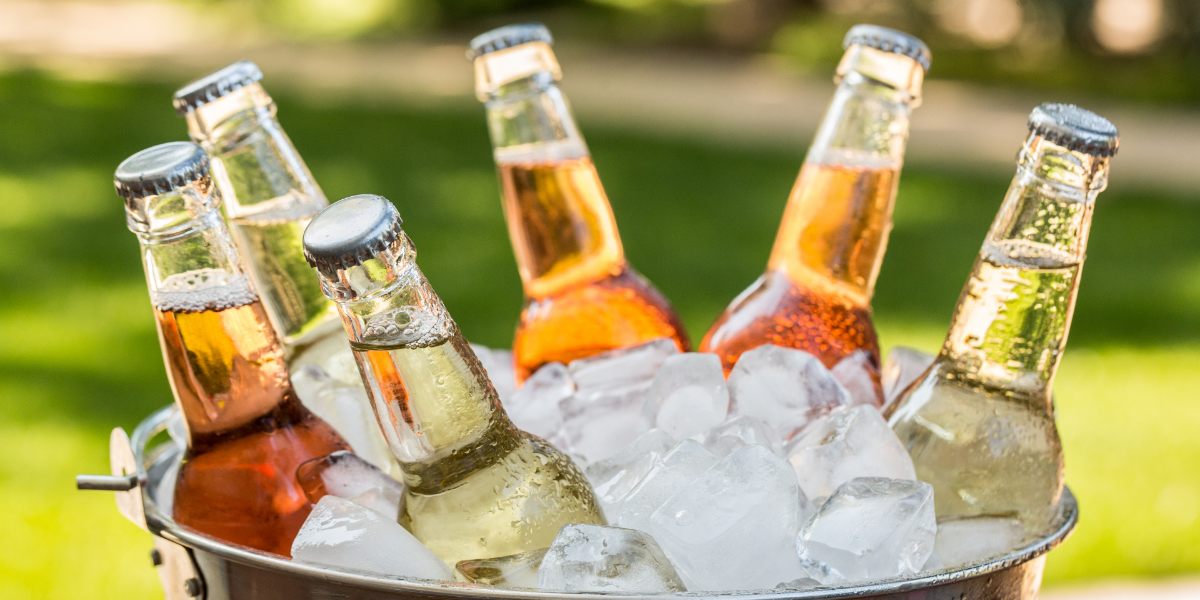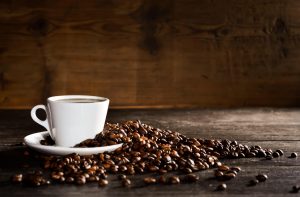
The ULTIMATE Guide to Keep Sugars Calm & Enjoy Beer!
As of 2023, there were 9,812 breweries in the United States according to the Brewers Association. Iowa alone in 2022 had 126 craft breweries and brewed 144,786 barrels of craft beer – that’s 1.9 gallons of beer for every person over 21 in the state.
🤓General Nutrition Facts
If you are consuming your cold beer from a can or bottle, it may have some nutrition information printed on the side, but nutrient labeling is not required for malt beverages. Craft beers contain a wide variety of ingredients, and therefore have a wide range of calories and carbohydrate contents.
The calorie count in beer depends upon alcohol levels (ABV) and sugar/carbohydrate content, with alcohol having more of an impact due to the higher number of calories per gram in alcohol (7 kcal) than carbs (4 kcal).
We also want to take into account that some beers will have higher carbohydrate counts than others. We can estimate, based on the type of beer. Lighter beers typically have lower carb counts than heavier varieties like stouts and porters. For example, a standard light beer may contain around 3-6 grams of carbs per 12-ounce serving, while a craft beer or malt liquor can have upwards of 15-20 grams of carbs in the same serving size.
Below are some types of beer you might encounter and the average ABV, calories, and carbohydrates for a standard serving.
🍺Types of Beer
🍻Popular Mass-Produced Beers
🍻Craft Beer
The popularity of craft beer styles can vary depending on the region and the preferences of the local beer drinkers. However, some of the most popular craft beer styles in the United States include:
Light
- Lager, Pilsner, Kolsch, Blonde, Wheat, Hefeweizen, Farmhouse Ale
- This category encompasses many of the “easy drinking” craft beers that you may come across. They are typically paler in color and have a lower ABV than the beers in other categories, around 3.5-5.5%
Hoppy
- IPA, Pale Ale
- These beers are widely known for their diversity in flavor and alcohol content and are a favorite beer to brew at many breweries. They are brewed using more hops – giving them their bitter taste. These beers can have ABVs that range from 4-12%, so be sure to keep a keen eye on the ABV for each hoppy beer you enjoy.
Malty
- Amber/Red Ale, Brown Ale, Dunkel
- With their distinct red to reddish brown color, these beers stand out from the crowd. Their malty flavor is warm and robust, with their sweetness balanced by a hint of bitterness. These brews can range in ABVs of around 4-8%.
Dark
- Porter, Stout
- Both dark and bold, these beers have rich flavors, with stouts typically being thicker and more bitter than porters. These beers may be brewed with coffee, chocolate, or other things to add to the depth of their flavors. In addition to their intense flavors, these dark beers can pack a punch with ABV, typically ranging from 6-12%, with some even higher than 14%!
Sour
-
Sours can be a variety of types of beer, but have acidic, tart flavors which are typically fruit-forward. These beers come in many vivid colors like blue, pink, green, and red. They can have a lower to modest ABV, typically in the range of 3-5.5%.
🍻Hard Seltzers
Seltzers have become increasingly popular the past few years, and they are typically lower in calories (and carbs) than most beer. Some seltzers are malt beverages like beer, but there are also seltzers that are spiked with vodka or tequila. Below you will find some of the most popular seltzers and nutrition information for each
🍻Hard Cider
Hard cider is an alcoholic beverage made from fermenting apple juice, and can vary in flavors ranging from sweet to dry. Ciders can range in ABV from around 5-8%. Many craft breweries will also have a cider or two on tap along with their craft beers and seltzers. Cider tends to contain more calories than beer, which is due largely to the higher levels of sugar content from its different fermentation process. Below are a few examples of popular hard ciders.
Angry Orchard Crisp Apple (5 ABV)
- 190 calories
- 25 grams carbs
Stella Artois Cidre (4.5 ABV)
- 180 calories
- 22 grams of carbs
Angry Orchard Crisp Light (4.3 ABV)
- 120 calories
- 11 grams of carbs
💯Tips for Smarter Drinking
Eat!
- Don’t drink on an empty stomach! Having some protein and fiber before consuming a carb-filled beer will help to stabilize your blood glucose levels. This can also prevent overeating and snacking on carb-filled bar food.
Stay Hydrated
- Alcohol is dehydrating. Be sure to hydrate before drinking, as well as drink a glass of water for each alcoholic beverage you have. Staying hydrated can help with blood sugar control, as well as help prevent the next day hangover!
Monitor your sugar
- If you have a CGM, you can watch in real time how each drink is affecting your sugar. Be sure to keep an eye out for signs of hypoglycemia, which you can be at a higher risk for 12 hours after drinking. This is because your liver, which prevents hypoglycemia by releasing glucose into the blood when you start to get low, prioritizes processing alcohol.
Look for lower carb options
- Beers and other alcoholic beverages who claim to be “light” or “low carb” must prove their claims, so they are the most reliable when it comes to providing nutrition information on calorie and carbohydrate counts.
Look for lower ABVs
- The ABV of an alcoholic beverage, especially beer, directly relates to the calorie and carbohydrate counts. If no specific nutrition information is provided, the ABV can be used to estimate this. With beverages with higher ABVs, be sure to watch how many ounces you are drinking as well. Remember, one “standard” beer is 12 ounces of a 5% beer.
Limit the number you drink
- The American Diabetes Association Standards of Care recommends that women with diabetes consume no more than one drink per day, and men no more than two drinks. To limit your intake while still enjoying your favorite craft beers, a great option is to order a flight or two of smaller pours and share with friends!
Summary
More recently, there have been new additions in the area of insulin pumps including the Tandem Mobi Automated Insulin Delivery System and the Twiist Automated Delivery System. Along with these new devices, Dexcom has also created Stelo, the first continuous glucose monitor that can be sold over-the-counter without requiring a prescription. The invention of these new devices is a critical new development in how patients are monitoring their blood sugars, and they are changing the way we manage diabetes for the better.









